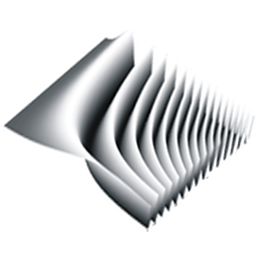|
Size: 687
Comment:
|
Size: 1407
Comment:
|
| Deletions are marked like this. | Additions are marked like this. |
| Line 3: | Line 3: |
| attachment:ctf.png | ||<<TableOfContents>>||{{attachment:ctf.png}}|| == CTF processing in 3 stages == |
| Line 7: | Line 8: |
| == Auto fitting == | === Auto fitting === |
| Line 10: | Line 11: |
| e2ctf.py 1.img --voltage=200 --apix=2 --cs=3.2 --auto_fit | e2ctf.py 1.img --voltage=200 --apix=2 --cs=3.2 --auto_fit |
| Line 12: | Line 13: |
| == Fine tuning == | |
| Line 14: | Line 14: |
| (save any changes you make with the Save Parms button) | This runs auto CTF parameter determination, storing the result in a local database. === Fine tuning === |
| Line 16: | Line 20: |
| e2ctf.py 1.img --gui | e2ctf.py 1.img --gui |
| Line 18: | Line 22: |
| == Write output == | Now that you have determined the parameters with the first command, have a look at the results in the interface. Tweak if necessary. Save any changes you make with the Save Parms button === Write output === |
| Line 23: | Line 30: |
| The output will be in the particles directory. Also, you can supply more than one image as input to e2ctf.py. |
|
| Line 26: | Line 31: |
| You can combine more than command would have worked if you had used a command like this: | Finally generate output. The output will be in the particles directory. |
| Line 28: | Line 33: |
| e2ctf.py 1.img --voltage=200 --apix=2 --cs=3.2 --auto_fit --gui | == Processing multiple images simultaneously == e2ctf takes multiple images as input, so you can use commands like this: {{{ e2ctf.py *.img --voltage=200 --apix=2 --cs=3.2 --auto_fit e2ctf.py *.img --gui e2ctf.py *.img --phaseflip --wiener }}} == Combining stages into a single command == You can combine more than one of the e2ctf processing stages into a single command. For instance you can run automated fitting and open the GUI with a single command like this: {{{ e2ctf.py 1.img --voltage=200 --apix=2 --cs=3.2 --auto_fit --gui e2ctf.py *.img --voltage=200 --apix=2 --cs=3.2 --auto_fit --gui }}} |
e2ctf
|
CTF processing in 3 stages
To get familiar with how e2ctf.py works, try separating the way you using e2ctf.py into three stages:
Auto fitting
e2ctf.py 1.img --voltage=200 --apix=2 --cs=3.2 --auto_fit
This runs auto CTF parameter determination, storing the result in a local database.
Fine tuning
e2ctf.py 1.img --gui
Now that you have determined the parameters with the first command, have a look at the results in the interface. Tweak if necessary. Save any changes you make with the Save Parms button
Write output
e2ctf.py 1.img --phaseflip --wiener
Finally generate output. The output will be in the particles directory.
Processing multiple images simultaneously
e2ctf takes multiple images as input, so you can use commands like this:
e2ctf.py *.img --voltage=200 --apix=2 --cs=3.2 --auto_fit e2ctf.py *.img --gui e2ctf.py *.img --phaseflip --wiener
Combining stages into a single command
You can combine more than one of the e2ctf processing stages into a single command. For instance you can run automated fitting and open the GUI with a single command like this:
e2ctf.py 1.img --voltage=200 --apix=2 --cs=3.2 --auto_fit --gui e2ctf.py *.img --voltage=200 --apix=2 --cs=3.2 --auto_fit --gui

